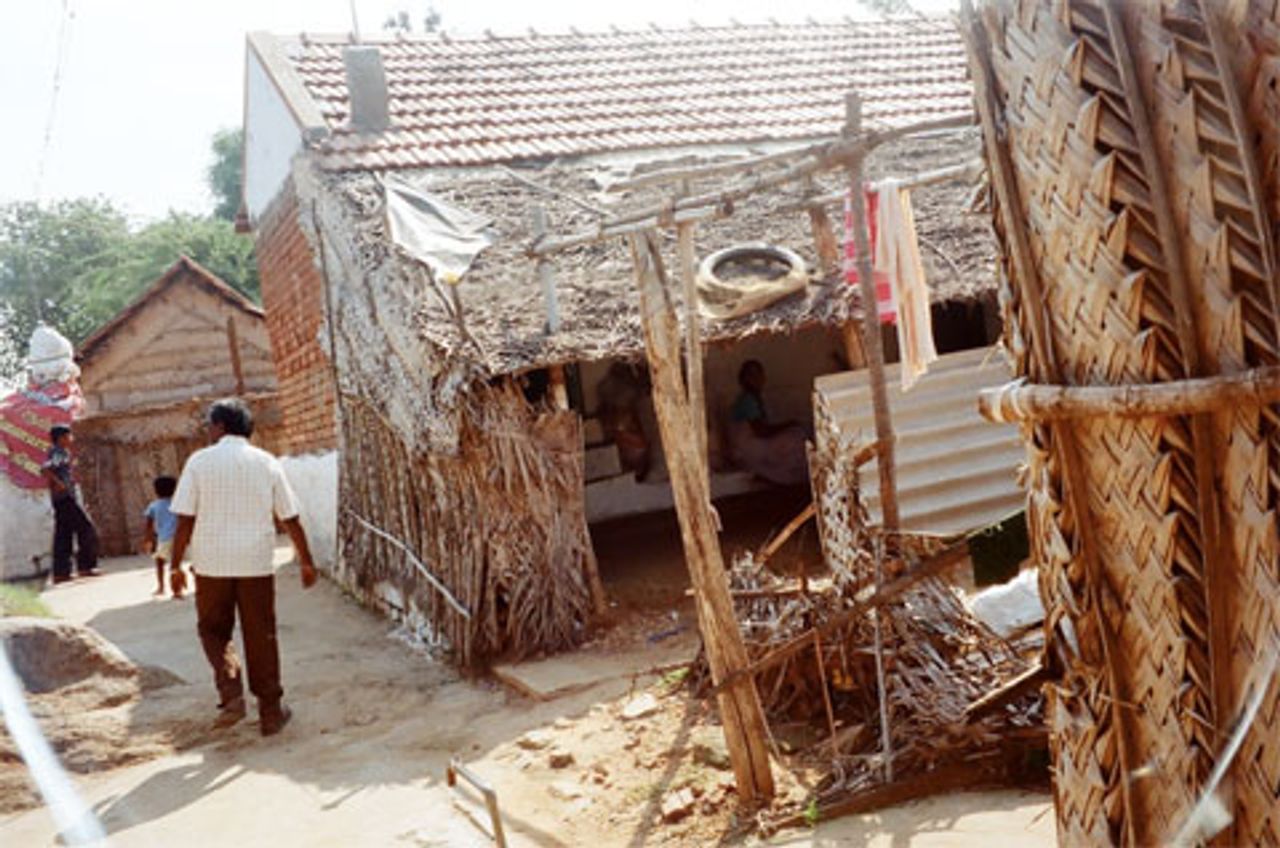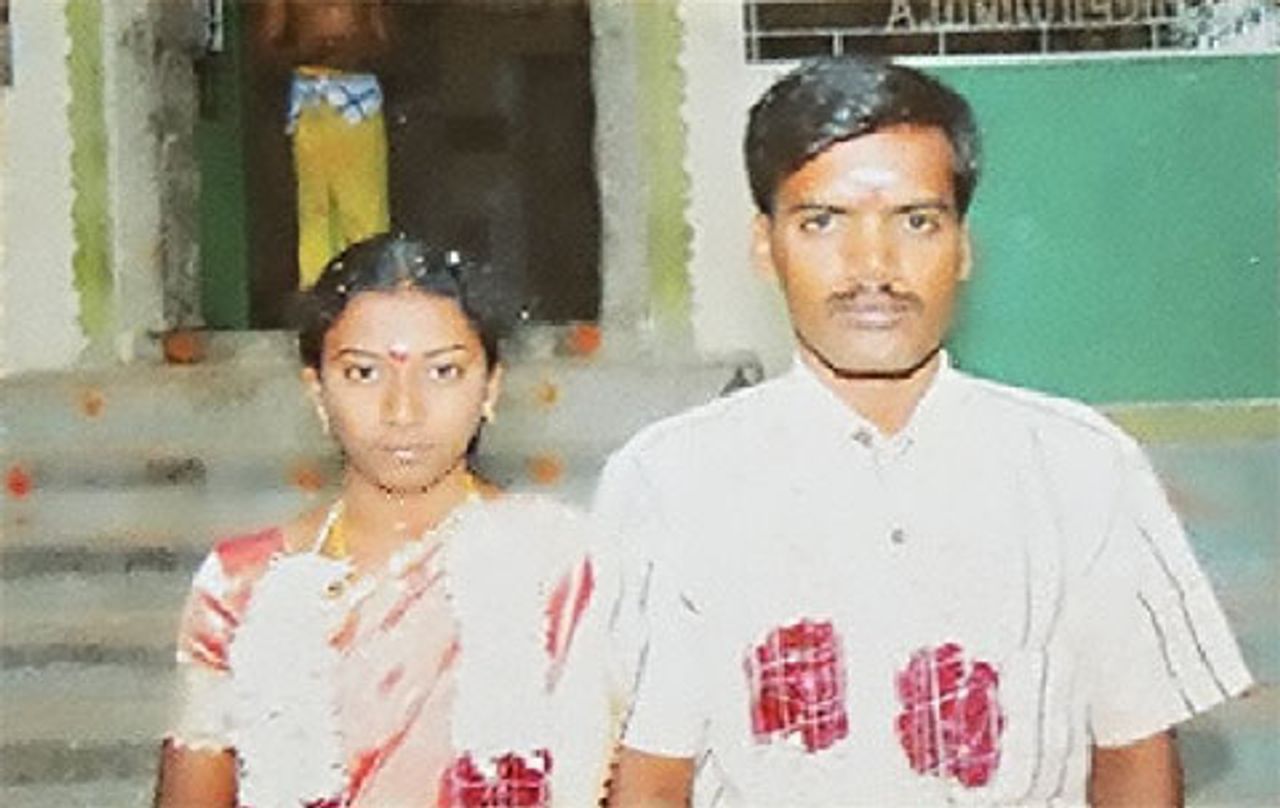In the environs of Tirupur, a reputed boom town in the southeast Indian state of Tamil Nadu, close to a thousand garment workers or their family members have committed suicide during the past two years. The suicides were driven to take their lives by a combination of grinding poverty, overwork, precarious employment or layoff, crushing debts, and harassment from private money-lenders and their goons.
Located some 500 kilometers north-west of Chennai, Tamil Nadu’s capital, Tirupur has evolved into a major center of India’s textile industry over the past two decades. It now produces about 90 percent of all India’s cotton knitwear exports. Since 1998 the city’s population is said to have grown at an annual rate of 30 percent, making Tirupur the fastest growing urban area in Tamil Nadu, and driving the population of the city and surrounding urban area over a million.
Huge fortunes are being made off Tirupur’s rise—revenues from its garment industry reportedly rose from 80 billion rupees (US $1.9 billion) in 2008 to 120 billion rupees ($2.6 billion) in 2009. Tirupur now accounts for about a quarter of all the export earnings of India’s garment industry.
But those whose toil is fueling this spectacular growth—the hundreds of thousands of textile workers and their families—are living in desperate conditions. So desperate, they are now committing suicide at the rate of 40 to 50 per month.
It was recently revealed that in the two years ending in September 2010, 910 Tirupur garment workers, their spouses or children had killed themselves. The majority of the suicide victims were adults of 20 to 40, that is people in the prime of their lives.
During the past year, the situation worsened. Whereas 495 garment workers and family members killed themselves in all of 2009, in the first six months of 2010 there were 350 suicides. And just in the three months of June through August 2010, some 250 workers took their own lives.
This increase is undoubtedly connected to a growing crisis in the garment industry that has caused Tirupur’s employers to cut 25,000 jobs and slash knitwear production by 20 percent during the past half year and to press for speed-up and wage cuts.
Industry spokesmen have blamed the job and production cuts on a steep rise in yarn prices, a rise they say is the due to the decision of the Congress Party-led United Progressive Alliance (UPA) government to allow unlimited exports of raw cotton and yarn.
The decision to lift all limits on cotton and yarn exports, a decision in keeping with the government’s pro-big business “free market” policies, has now been partially reversed due to the complaints of the garment manufacturers. At the beginning of December, the UPA government announced that cotton-yarn exports will be limited to 720 million kilograms in India’s 2010-11 fiscal year.
Predictably, the garment bosses have welcomed the reversal, while the yarn-manufacturers have condemned it.
But the bitter reality is that even when production was expanding rapidly in Tirupur in 2009, hundreds of despairing garment workers took their own lives.
Sweatshops for world leading retailers
The export-oriented garment industry in Tirupur produces all types of knit fabrics: children’s, women’s, and men's garments including underwear, t-shirts, nightwear and sports-wear.
It consists of more than 8,000 units, of which some three thousand are micro-units that employ only a handful of workers.
The garments manufactured in these units are mainly exported to North America and Europe where they are sold by some of the world's largest retailers including Walmart, Primark, Diesel, ARMY, and Tommy Hilfiger.
Through the rationalization of the manufacturing process, employers have succeeded in breaking down the various tasks in creating garments so as to need just a relatively small number of skilled workers. The bulk of the work—repetitive mind-numbing tasks—can be delegated to workers with little or no training.
Under conditions where rural India is mired in crisis, the garment manufacturers have a vast pool of potential unskilled workers—rural laborers and small peasants who have had to abandon agriculture because it doesn’t provide them with sufficient cash income to survive in an economy where the market has invaded every facet of life.
So as to further reduce their costs and fracture the workforce, the large manufacturers sub-contract much of the work to smaller companies that specialize in a single operation such as adding dyestuff, removing wrinkles, or stitching.
The disaggregation of the production process facilitates the systematic violation of government work standards, which in any event are routinely ignored in India.
Although India’s labor laws stipulate that overtime be paid after eight hours of work, many of the workers in Tirupur are working 12 and even 16-hour shifts at the normal pay rate.
For a 12-hour shift for operations such as cutting, stitching, tailoring and ironing the wage is normally around Rupees 190 ($4.22). For labeling it is Rs. 132 ($2.93); for folding of the ready-made apparels it is Rs. 131($2.93); for checking of finished garments it is Rs. 119 ($2.64) and for packing finished apparels it is a mere Rs. 106 ($2.35).
While workers are forced to toil long hours for meager wages, they confront all the problems of a capitalist boom town.
 A residential area of garment workers
A residential area of garment workersHousing is in short supply and expensive. Because of exorbitant rents many workers live with their families in rooms measuring a mere eight feet by eight feet. And most of the dwellings do not have inside toilet facilities.
The prices of food and other essential goods is much higher—something in the order of 50 percent higher—in Tirupur than in the surrounding rural area.
Workers are forced to spend their own money in private health clinics, since the government has done nothing to build medical facilities in Tirupur.
Many of the workers are also trying to support relatives still living in the villages from which they have migrated to Tirupur for work.
As in rural India, a major cause of suicide among the Tirupur garment workers is debt. Unable to make ends meet on their meager wages or facing some calamity such as the loss of a job or the hospitalization of a family member, workers borrow from moneylenders at usurious interest rates. They then frequently become trapped in a vicious circle of borrowing to paying back old debts at ever rising interest rates. As the loans pile up, the workers and their families are constantly hounded by money lenders. Ultimately, some see suicide as their only means out.
 Priya and Gautham
Priya and GauthamThis was what happened to Priya and Gautham, a Tirupur couple who committed suicide in September and whose relatives spoke with reporters from the World Socialist Web Site when they visited India’s knitwear capital last month. (See: “Tirupur suicides: The human cost of India’s capitalist expansion”.)
The wave of suicides in Tirupur are a devastating indictment of the Indian bourgeoisie. While the UPA government and corporate media celebrate such indices of India’s rise as its fast growing population of billionaires and US President Obama’s affirmation that India is a world power, more than 70 percent of Indians live on less than $2 per day and hundreds of millions are stunted or malnourished.
For the better part of a decade, the Indian media and government have had to admit that rural India, or at least much of it, is beset by crisis and that one manifestation of this is the phenomenon of peasant suicides. According to official figures, between 1997 and 2009, at least 216,500 indebted and impoverished farmers took their lives, including 17,368 in 2009.
The Tirupur suicides underscore that the real social divide in India is not between rural and urban, but between those who have monopolized the fruits of India’s capitalist expansion and the vast majority of India’s population. The swelling incomes and wealth of the bourgeoisie and of the managers, lawyers, media scribes and politicians who do their bidding arises directly from the brutal exploitation, akin to England during the industrial revolution, that prevails in India’s old and newly emerging industrial centers.
The conditions in Tirupur are also as a further damning exposure of the politics of the Stalinist Communist Party of India Marxist or CPM. First and foremost because of the crucial support that the CPM and the parliamentary alliance it leads, the Left Front, have given the Indian bourgeoisie in implementing its now two-decade old “new economic policy”—that is the transformation of India into a cheap labor producer for world capitalism through deregulation, privatization and the slashing of public services. But it also must be noted that the CPM has played a scandalous role in Tirupur that could only reinforce workers’ sense of powerlessness.
CPM and Left Front MPs have propped up a series of Union governments, including from May 2004 through June 2008 the current UPA government, that have pressed forward with the market reforms. Moreover, in those states where the Left Front holds office, most importantly West Bengal, it has publicly dismissed socialism “as a far off cry” and imposed “investor-friendly” policies, including outlawing strikes in the IT sector and shooting down peasants opposed to their expropriation of their land for Special Economic Zones.
In Tirupur, the CPM has openly colluded with the garment bosses. According to the CPM itself, in 2008, the elected CPM member of the state legislature for Tirupur, one C. Govindsamy, acted as the conduit for a bribe from Tirupur garment bosses to the Tamil Nadu labor minister. The 2.5 million rupees (more than $50,000) bribe was offered with the aim of persuading the minister to overlook violations of state overtime regulations.
But when Govindsamy’s actions were exposed, the CPM merely removed him as the head of its parliamentary faction in the state legislature. This well-trusted lackey of the garment bosses was allowed to continued to sit as a CPM MLA. Only much later, after Govindsamy had repeatedly violated party decisions by praising the DMK-led state government—a right-wing government that the CPM helped elect but now opposes—did it reluctantly expel him. “We were under compulsion to expel him as he refused to change his attitude even after he was given a long rope,” said party state secretary G. Ramakrishnan.
Recent developments in Tirupur—the brutality of capitalist exploitation and the utter rot and rightwing character of the Stalinist CPM—starkly lay bare the urgent need to build a new revolutionary party of the Indian working class armed with a program of socialist and democratic demands for mobilizing the toilers against Indian and world capitalism.
Subscribe to the IWA-RFC Newsletter
Get email updates on workers’ struggles and a global perspective from the International Workers Alliance of Rank-and-File Committees.
